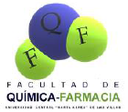
7th International Chemistry Symposium
SIQ 2019
Abstract
Bark is the residue of wood transformation generated in the highest quantities. The principal uses of these valuable lignocellulosic materials are in landfill or for heat generation, thus failing to better exploit its multiple components. We have been studying forest extractives as rich sources of bioactive molecules for many years. In the present research we are exploring the two-step process consisting of pre- extraction followed by organosolv pulping. The organosolv process applied in this research is based on use of a Lewis acid as catalyst (ferric chloride) and has recently been patented, The pre- extraction step, using ethanol- water solvent system, yields a variety of polyphenols and sugars, while the pulping with the same solvent system gives access to bark polymers: cellulosic pulp and organosolv lignin. The residual liquor contains the products of hemicelluloses transformation. This approach allows for a conversion of bark residue into several new products with distinctive application: bark extract as food ingredient, organosolv lignin in polymer composites application and the hemicellulose products for organic synthesis.
Resumen
Bark is the residue of wood transformation generated in the highest quantities. The principal uses of these valuable lignocellulosic materials are in landfill or for heat generation, thus failing to better exploit its multiple components. We have been studying forest extractives as rich sources of bioactive molecules for many years. In the present research we are exploring the two-step process consisting of pre- extraction followed by organosolv pulping. The organosolv process applied in this research is based on use of a Lewis acid as catalyst (ferric chloride) and has recently been patented, The pre- extraction step, using ethanol- water solvent system, yields a variety of polyphenols and sugars, while the pulping with the same solvent system gives access to bark polymers: cellulosic pulp and organosolv lignin. The residual liquor contains the products of hemicelluloses transformation. This approach allows for a conversion of bark residue into several new products with distinctive application: bark extract as food ingredient, organosolv lignin in polymer composites application and the hemicellulose products for organic synthesis.
About The Speaker

Dr. Tatjana Stevanovic Janezic






